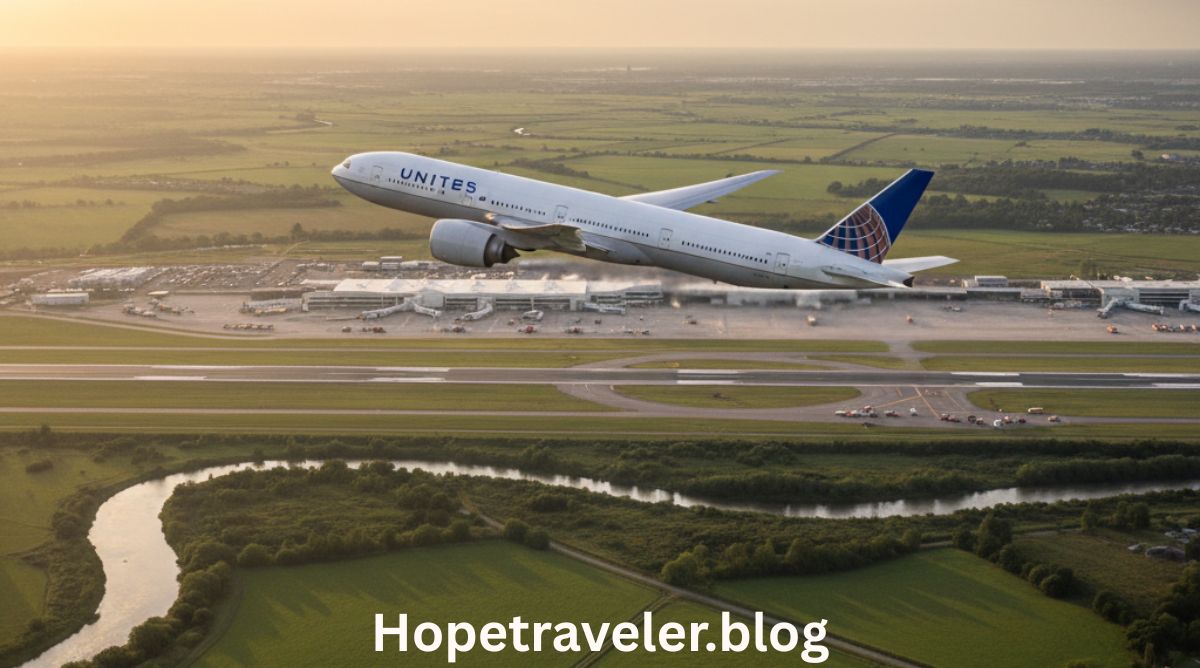On May 27, 2025, United Airlines Flight UA770 — a scheduled trans-Atlantic service from Barcelona El Prat Airport (BCN) to Chicago O’Hare International Airport (ORD) — was forced to declare a mid-air emergency and divert to London Heathrow Airport (LHR). The event highlighted the importance of aviation safety protocols, crew training, aircraft systems and rapid decision-making under pressure. In this article we explore what happened, how it was managed, the technical aspects, passenger impact, and lessons for the aviation industry. For background on aircraft emergencies and safety culture see the Wikipedia article on Aviation safety.
Flight Details and Itinerary
Flight UA770 was operating using one of United Airlines’ long-haul aircraft (reports suggest a Boeing 787-9 Dreamliner) from Barcelona to Chicago. The planned route would traverse European airspace, cross the Atlantic, and enter U.S. airspace before landing at Chicago. The flight took off normally, with passengers boarding, settling in, and expecting a routine eight-to-ten hour trans-Atlantic journey.
The Emergency Diversion Decision
Mid-Flight Anomaly
Approximately 90 minutes into the flight, cruising at altitude, the flight crew detected an anomaly. According to available reports, a cabin pressurisation issue was flagged — a critical system for maintaining safe, breathable air at high altitudes. Because cabin pressurisation is fundamental for passenger safety, any irregularity triggers an elevated response.
Declaration of Emergency (“Squawk 7700”)
Once the crew recognised the severity, they declared a general emergency to air traffic control. In aviation, setting transponder code 7700 means “general emergency” and signals that the flight requires priority handling. The decision to divert was made in coordination with air traffic controllers and the airline’s operations centre.
Choosing the Diversion Airport
Safety dictates that when an irreversible or uncertain anomaly occurs, the flight should land at the nearest suitable airport that can accommodate the aircraft, assess the issue, and provide support. In this case, London Heathrow (LHR) was selected, a major international hub equipped to handle large aircraft and emergency situations. Reports suggest the aircraft touched down safely at Heathrow’s Runway 27R and proceeded to Gate B44.
Aircraft Systems: Pressurisation and Safety
Cabin Pressurisation Fundamentals
At cruising altitudes (above ~30,000 feet), the outside air pressure is far too low for human respiration. Modern aircraft maintain cabin pressure equivalent to a much lower altitude. The cabin pressurisation system monitors differential pressure (between cabin and ambient), controls outflow valves, and ensures a safe environment. If a sensor or valve malfunctions, the system alerts the crew.
Redundancy and Monitoring
The Boeing 787-9 and similar modern airliners are equipped with multiple redundant systems for critical functions like pressurisation, environmental controls, and avionics. These systems continuously monitor parameters and alert the crew long before a serious hazard arises. The UA770 incident appears to reflect the success of these built-in safety layers.
Emergency Descent or Diversion Scenarios
If cabin pressure cannot be maintained, the crew must descend to an altitude where breathing without supplemental oxygen is safe. Simultaneously, a diversion to an appropriate airport is usually initiated. While detailed official data on UA770 have yet to be publicly disclosed, the swift diversion suggests effective use of these protocols.
Passenger Experience and Airline Response
Onboard Atmosphere
For passengers, the announcement of a diversion is understandably disconcerting. However, reports indicate that the cabin crew managed communications professionally, reassuring passengers while maintaining calm and ensuring procedures were followed. Oxygen masks did not deploy, suggesting the situation was contained before turning into a full depressurisation event.
After Landing Support
Once on the ground at Heathrow, United Airlines arranged for accommodations, meals and alternate flights for affected passengers. Such support is typical when an airline diverts a flight due to a safety event.
Operational Impact
The diversion disrupted schedules, aircraft routing and passenger connections. Diversions of this nature create a ripple effect: aircraft may require technical inspection, crews may exceed duty limits and passengers face delays. While costly and inconvenient, the priority remains safety.
Investigation, Technical Findings & Industry Implications
Initial Findings
While United Airlines has not publicly released a full investigation report for UA770 at the time of writing, press accounts cite a possible pressurisation anomaly — perhaps a faulty pressure sensor or outflow valve. The technical resolution will likely require inspection of fault logs, maintenance history and system performance.
Regulatory & Airline Oversight
In the U.S., the Federal Aviation Administration (FAA) and in Europe the European Union Aviation Safety Agency (EASA) oversee investigations of serious in-flight deviations. Airlines are required to file reports, crews are debriefed, and aircraft maintenance may be accelerated. The UA770 case contributes to the data pool that regulators and manufacturers use to refine safety standards.
Discussion for the Industry
- Crew training: UA770 reinforces the value of rigorous simulator training for pressurisation failures and diversion decisions.
- Technology: Modern airliners’ diagnostic systems appear to have done their job. UA770 shows that early detection can lead to prompt diversion before escalation.
- Passenger communications: Clear, calm communication by cabin crew helped manage the environment onboard, reducing panic.
- Airport infrastructure: Having a well-equipped diversion airport (like Heathrow) is key to handling such emergencies smoothly.
Comparisons with Other Incidents
While UA770 did not result in a crash or fatalities, it joins a list of flights where diversions occurred for safety reasons. For example, Southwest Airlines Flight 1380 (2018) suffered an engine failure and rapid depressurisation, landing safely after a dramatic sequence. Also, United Airlines Flight 1175 (2018) experienced an engine fan-blade failure and diverted safely. UA770’s scenario was less visible in terms of structural failure, but the principles of early detection and diversion are consistent across safety-critical events.
Lessons Learned
- Always choose safety first – Schedule, cost and convenience are secondary when a technical alert arises. The UA770 diversion underscores this principle.
- Training matters – The prompt decision and smooth landing indicate that crew training and adherence to protocols worked.
- Technology is your friend – Aircraft design and diagnostics caught the anomaly early enough to avert a worse situation.
- Communication is key – Passengers reported that crew announcements brought calm in a stressful moment.
- Preparedness pays off – Diversion airports, emergency services, airline procedures: everything needs to work when seconds count.
Why This Matters to Travellers
Most passengers will never experience an inflight emergency. Yet UA770’s case matters because it demonstrates that aviation is prepared. It shows that when things go wrong, the system is designed to catch them, act decisively, and bring everyone home safely. For travellers, it’s a reassurance that behind every scheduled flight lies a complex web of training, technology and regulation designed for safety.
Conclusion
The story of United Airlines Flight UA770’s emergency diversion is not one of failure—it is one of success in safety management. A trans-Atlantic flight turned diversion at the first sign of trouble, and the result: no injuries, no major incident, just a safe landing and continuation of service. While the inconvenience to passengers is regrettable, the outcome reminds us of the invaluable safety layers built into modern commercial aviation. As air travel continues to evolve, the lessons from UA770 will help reaffirm trust in flying and demonstrate that when emergencies occur, preparedness makes the difference.




